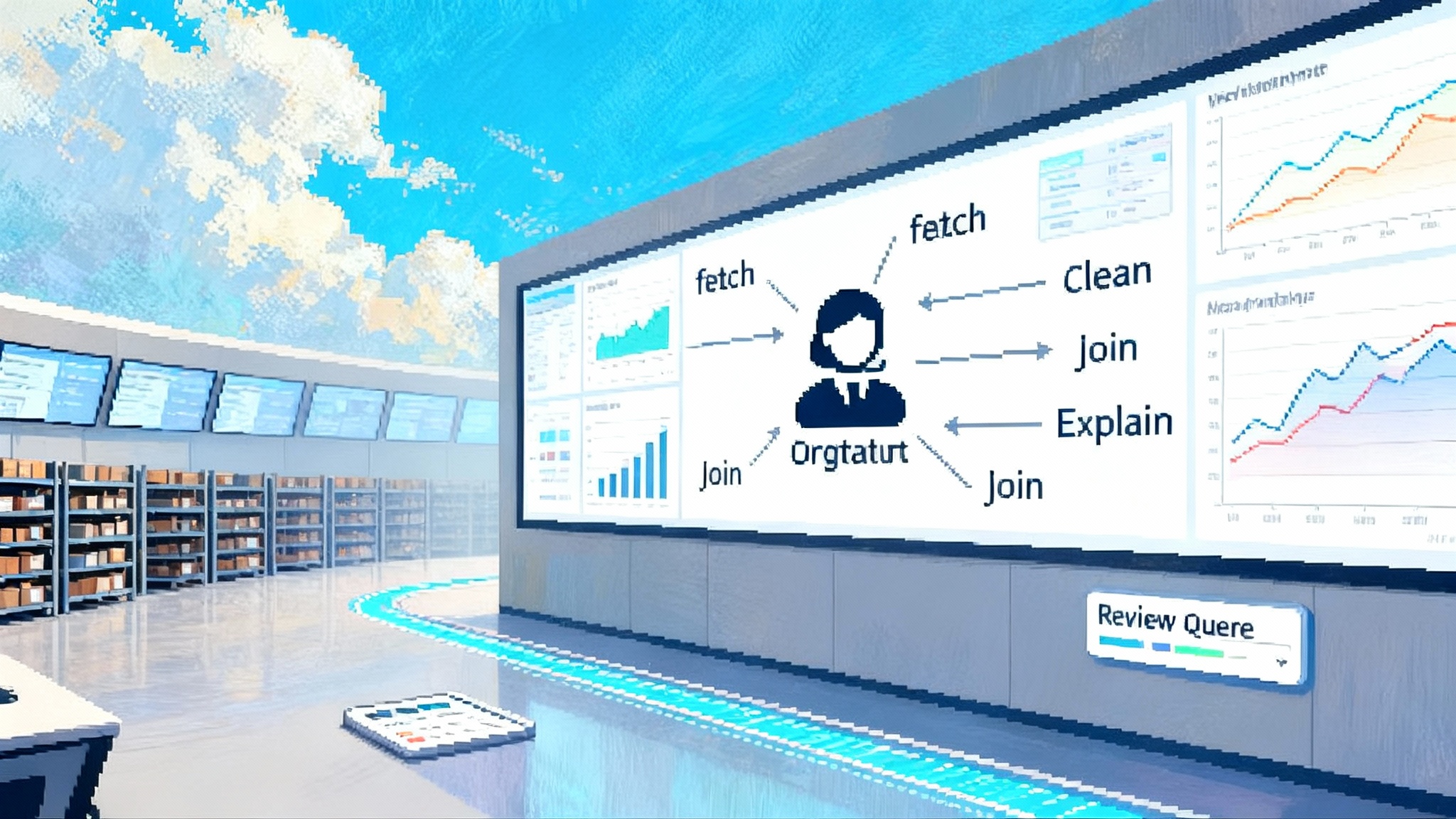Cartesia Line: code-first voice agents hit production speed
Cartesia introduced Line on August 19, 2025, a code-first stack that unifies SDK, CLI, and model-integrated speech to cut latency, raise reliability, and make evaluation actionable. Here is what it changes for voice CX.

A launch that signals a turning point
On August 19, 2025, Cartesia introduced Line, a code-first platform for real-time voice agents that pairs tightly with the company’s Sonic text to speech and Ink speech to text models. The thesis is ambitious and refreshingly concrete: give developers a single stack that can move from prototype to production without sacrificing the live conversational feel that voice users expect. For the official context and announcement, see Cartesia's official Line launch.
If you have tried to ship a production voice agent, you know the three walls teams hit again and again:
- Latency compounds as audio, ASR, LLM reasoning, and TTS bounce across multiple vendors.
- Reliability erodes when small changes in one component create quality regressions somewhere else.
- Evaluation gets noisy because classic call transcripts hide turn timing, interruptions, and failures that appear only under load.
Line bets that a code-first stack, integrated with the speech models at a low level, can remove those walls. In practice that means the speech stack, the real-time audio loop, the agent runtime, and the developer tooling are engineered to work together.
Why code-first matters for real-time voice
No-code builders are excellent for brainstorming and demos. The tradeoff emerges when you need to encode policy, background workflows, or tool calls that must fire while the user is speaking. Voice is not a linear chat transcript. It is a duet where timing, barge-in, and context collide.
Line puts code at the center through a public SDK and a CLI. That one decision ripples across the lifecycle:
- You express logic directly in code, including multi-step reasoning, parallel background tasks, and tool orchestration that runs within the live conversation loop.
- You deploy from the terminal, then talk to your agent in seconds, which tightens the design, deploy, test cycle.
- You get observability primitives by default: logs, audio, and transcripts tied to each call, which makes debugging much less painful.
The result is less glue code, fewer hidden constraints, and faster iteration on the exact behaviors your use case demands.
The power of model integration
Line runs alongside Cartesia’s Sonic for TTS and Ink for streaming STT. Because the agent runtime is co-designed with the speech stack, several quality and performance levers become possible:
- Lower time to first audio, since the path from reasoning to speech is colocated.
- More natural barge-in handling, because listening and speaking can coordinate without cross-vendor lag.
- Better transcript fidelity in noisy environments, which feeds more accurate context to the agent’s tools and memory.
Deep integration is also an operational stance. When the model team improves speech latency or prosody, the agents running next to those models benefit immediately. You spend fewer cycles rewriting pipelines and more cycles improving behavior.
Tackling latency, reliability, and evaluation together
Most platforms slice these concerns apart. Line tries to pull them into one surface.
- Latency: With audio, ASR, LLM, and TTS in one pipeline, you avoid repeated serialization, transport, and buffering. That is usually what makes voice agents feel slow or awkward.
- Reliability: When the runtime, speech models, and infrastructure are owned as one product, there are fewer moving parts and more consistent performance as you scale.
- Evaluation: Line records every call, exposes system metrics like time to first audio, and lets you define LLM-as-a-judge scoring for outcomes such as goal completion, empathy, and policy adherence.
That last piece matters more than it sounds. Dashboards show averages. Voice agents need judgment. If the bot negotiated a reshipment correctly but sounded impatient, a human would notice instantly. A judge model can score that dimension and track it over time with labels you control.
Code-first versus no-code voice builders
You can ship good experiences either way. The question is what happens as your requirements harden and traffic rises.
- Reasoning depth: Code yields direct control of memory, tool orchestration, and edge-case handling. No-code flows often abstract these behind blocks that are hard to extend.
- Real-time coordination: Mid-turn tool calls, barge-in, and graceful cutoffs are first-class in a code runtime that sees audio and state together. Visual builders tend to linearize the conversation.
- Deployment speed: A CLI and push-to-deploy loop lets you test changes with live traffic quickly, then roll back by version. Drag and drop UIs can slow down once teams need code reviews and branching.
- Evaluation: If your metrics include judge scores tied to business goals, you want evaluation wired into the call loop, not an export-and-grade afterthought.
- Extensibility: Code lets you stitch in your preferred LLMs, retrieval, and tools without waiting for a vendor to add the integration.
The point is not that no-code is bad. It is that the moment you care about latency budgets and policy guarantees, code-first tends to win because you can shape the entire loop.
For a broader look at how agent platforms are maturing from toy demos to enterprise-grade systems, see how Algolia approaches this evolution in Inside Algolia Agent Studio and how task-first orchestration changes expectations in Space Agent Signals a Shift.
Enterprise hooks that actually matter
Real contact centers, healthcare systems, and banks need more than great demos. They need operational and regulatory comfort. Cartesia highlights three categories here: on-prem deployment, fine-tuning of speech models, and compliance-grade controls.
- On-prem and private deployments: Line can run in a managed VPC or on-prem so audio and transcripts never leave your controlled environment.
- Model customization: Sonic and Ink can be fine-tuned for your acoustics, vocabularies, or voice profiles. That helps with noisy warehouses, niche product names, or legal disclaimers.
- Compliance and identity: The platform lists SOC 2 Type II, HIPAA, PCI Level 1, SSO, and SLAs. For details on the controls, review the Line enterprise features page.
- Observability and audit: Every call includes logs, audio, transcripts, and system metrics, which helps you answer the two questions auditors always ask: what happened, and why.
These are the differences between a pilot and a production rollout. If you are in a regulated domain, the combination of deployment options and auditable trails will be the first gate you must clear.
For more on the importance of instrumentation around AI systems in the field, our perspective in Edge AI Observability outlines how proactive telemetry turns risk into learning.
What this means for contact centers and voice CX
Voice CX has lived with a persistent tradeoff. IVRs were reliable but clunky. NLP bots were flexible but often brittle under pressure. A model-integrated, code-first stack improves both axes.
- Faster handoffs and lower AHT: When agents can answer, clarify, and act without long round trips, you reduce dead air, which compresses average handle time.
- Higher first contact resolution: Background tools can fetch order data, issue credits, or book appointments while the TTS keeps pace, raising the chance the task completes on one call.
- More consistent brand tone: Fine-tuned speech and judge metrics that track empathy or compliance give you levers to shape how the agent sounds across scenarios.
- Better deflection without dead ends: Because the logic is code, you can implement nuanced policies such as partial refunds or cross-sell offers without waiting for a UI widget.
Integration is where the work lands. A credible rollout plan usually includes:
- Pick two call types with clear success criteria, such as order status and appointment rescheduling.
- Wire CRM, ticketing, and payments through tool calls with strict guardrails, including idempotency and audit.
- Define your scorecard, for example success, compliance, tone, and escalation quality, and implement judge metrics that label these on every call.
- Run a canary phase on real traffic, watch latency and judge scores, then ramp volume.
- Keep humans in the loop for edge cases, with fast escalation paths and transcript summaries that include what the agent already did.
Risks you should plan for, plus mitigations
Any agent that reasons in natural language and takes actions can fail in surprising ways. A candid list of risks, plus practical mitigations, sets the right expectations.
- Hallucinations and wrong actions: Even with guardrails, a model can act overconfidently. Mitigate with strict tool schemas, allow lists, and a confirm step for sensitive actions.
- Judge bias and false positives: LLM-as-a-judge metrics can drift or encode bias. Calibrate with human-scored samples, cross-evaluate with a second judge model, and track inter-rater agreement.
- Privacy and retention: Voice contains PII by default. Minimize retention, redact transcripts, and pin policies to legal requirements. On-prem helps, but process discipline still matters.
- Compliance drift: A prompt change can cause policy side effects. Use code reviews, gated releases, and automatic tests that simulate risky scenarios and assert on judge scores and hard rules.
- Latency regressions: New tools or knowledge sources can slow the loop. Track latency budgets per step, catch regressions in pre-production load tests, and fail fast to a safe response when a tool times out.
The right stance is not fear. It is instrumentation and control. If you can see risk early in the right dimension, you can fix it before it hits customers.
An evaluation checklist you can run this week
Whether you use Line or another stack, you can pressure test your agent with a checklist like this:
- Latency budget: Set targets for time to first audio and time to first meaningful content. Track distributions, not just averages.
- Barge-in behavior: Measure how quickly the agent stops speaking when a user interrupts, and whether it resumes gracefully.
- Tool reliability: Simulate flaky APIs to ensure the agent retries and falls back to a safe answer without hanging the turn.
- Policy compliance: Create red team prompts for do-not-disclose topics. Assert that judge scores and hard filters both catch violations.
- Goal completion: Define success labels per call type, then have a judge model score at scale with human auditing of a representative sample.
- Tone and empathy: Decide what on brand sounds like, then score for it and coach the TTS configuration and prompts accordingly.
- Escalation quality: When the agent hands off, verify that the summary and the actions already taken are accurate and useful to the human.
Run these daily on a rotating corpus of real calls. Trend lines matter more than single numbers.
From chat to voice, the platform story evolves
The last two years made everyone fluent in chat-based agents. Real-time voice changes the physics. Streaming, duplex audio, and interrupt handling turn latency from a number into a feeling. The platform that wins will combine three properties: a code-first developer experience, a first-class speech stack, and an evaluation system that treats quality as more than word error rate.
Line is an opinionated answer to that challenge. It argues that the stack should be one thing, not five glued together. It argues that developers should iterate in code with superpowers like judge metrics and production-grade logs. And it argues that enterprises should get on-prem options, fine-tuning, and auditable trails from day one.
If you are exploring adjacent approaches, our look at task-first agents in Space Agent Signals a Shift and the path from demo to enterprise in Inside Algolia Agent Studio shows how the broader agent ecosystem is converging on similar priorities: speed, reliability, and measurable outcomes.
Getting started thoughtfully
Here is a straightforward plan to move from interest to impact:
- Start small, ship fast: Stand up a pilot with two tightly scoped call flows. Use your CLI to iterate in hours, not weeks.
- Instrument for learning: Turn on judge metrics for success, compliance, and tone. Tie them to business KPIs like AHT, FCR, and CSAT.
- Bring your own stack: Connect your LLM of choice, retrieval, and tools. Keep a clean abstraction so you can swap components later.
- Plan your landing zone: If you are regulated, decide early whether you need an on-prem or managed VPC deployment. Confirm retention and audit requirements up front.
- Coach the voice: Spend time on TTS settings, interruptions, and prosody. How it sounds is how it feels.
Line’s arrival is not a silver bullet, but it is a meaningful step toward voice agents that feel fast, stay within policy, and actually finish the job. If that is the standard, code-first and model-integrated looks like the right bet.
Bottom line
- Line’s code-first approach reduces integration friction and puts real-time coordination within reach of production teams.
- Model integration with Sonic and Ink unlocks lower latency and more natural barge-in, while improving transcript fidelity under noise.
- Built-in evaluation with judge metrics moves quality from anecdote to data, which is what operations teams need to scale responsibly.
- Enterprise options such as on-prem deployment, fine-tuned speech models, and compliance controls turn promising pilots into stable programs.
For specification details and ongoing updates, return to Cartesia's official Line launch and the summarized controls on the Line enterprise features page.


